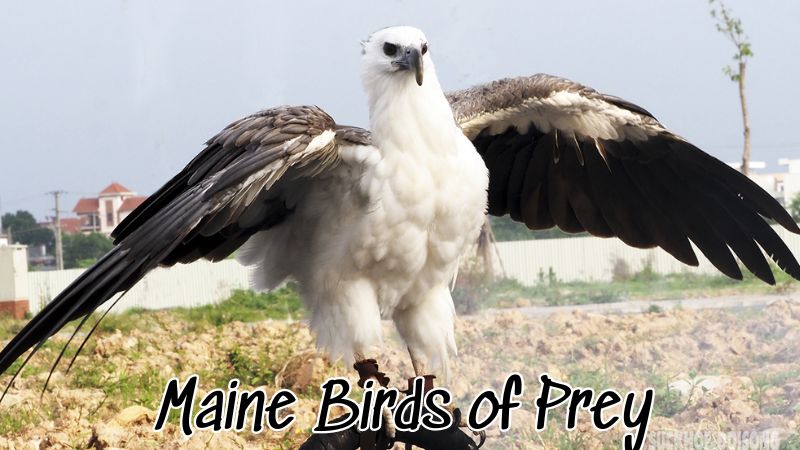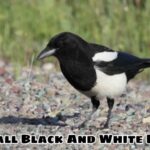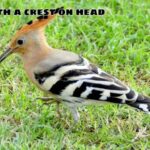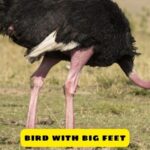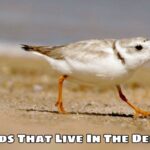Maine birds of prey are fascinating and integral to the state’s diverse ecosystem. These majestic predators, which include species such as bald eagles, great horned owls, and red-tailed hawks, play an important role in regulating prey populations and maintaining ecological balance.
Join Exoticbirdscorner as we explore the lives of Maine’s birds of prey, revealing not only their unique adaptations and hunting strategies, but also their significant impact on the environment.
Detailed Descriptions of Maine Birds of Prey
Bald Eagle (Haliaeetus leucocephalus)
- Description: The Bald Eagle, the national bird of the United States, is renowned for its striking appearance with a white head and tail feathers, contrasting with its dark brown body and wings. It has a powerful yellow beak and large, strong talons.
- Habitat: Bald Eagles are typically found near large bodies of open water with abundant food supply and old-growth trees for nesting. In Maine, they are often seen around lakes, rivers, and coastal areas.
- Hunting Habits: Bald Eagles primarily feed on fish, but their diet can also include birds, small mammals, and carrion. They are adept at soaring high above the water and diving to catch their prey with precision.
Great Horned Owl (Bubo virginianus)
- Description: The Great Horned Owl is one of North America’s largest owl species, recognizable by its tufted “horns,” yellow eyes, and broad, powerful wings. Its plumage is mottled brown, gray, and white.
- Habitat: This versatile owl inhabits a variety of environments, including forests, deserts, and urban areas. In Maine, they are often found in wooded areas and forest edges.
- Hunting Habits: The Great Horned Owl is a nocturnal predator with excellent hearing and vision. It preys on a wide range of animals, from rodents and rabbits to birds and even other owls. Its silent flight and strong talons make it an effective hunter.
Red-tailed Hawk (Buteo jamaicensis)
- Description: The Red-tailed Hawk is one of the most common and widely recognized hawks in North America, known for its distinctive reddish-brown tail. It has a broad wingspan and a white chest with dark streaks.
- Habitat: This hawk prefers open country, including fields, grasslands, and areas with scattered trees. In Maine, they are frequently seen perched on fence posts or soaring over open fields.
- Hunting Habits: Red-tailed Hawks are versatile hunters that primarily feed on small to medium-sized mammals, such as rodents and rabbits. They use a combination of soaring and perching to spot prey, relying on their keen eyesight to detect movement.
Comparison and Contrast Between Species
Size and Appearance
- Bald Eagles are the largest of the three, with a wingspan that can reach up to 7 feet. Their iconic white head and tail feathers set them apart visually from other predatory birds.
- Great Horned Owls are smaller than Bald Eagles but larger than Red-tailed Hawks. They are distinguished by their “horns” and large, rounded body.
- Red-tailed Hawks are medium-sized with a wingspan of about 4 feet, easily recognizable by their reddish tail and broad wings.
Habitat Diversity
- Bald Eagles are closely associated with bodies of water and require large, open areas for hunting and nesting.
- Great Horned Owls are highly adaptable and can live in various habitats, including forests, urban areas, and open country.
- Red-tailed Hawks favor open landscapes with scattered trees but can also adapt to various environments, including urban settings.
Hunting Skills
- Bald Eagles use their impressive aerial skills to spot and capture fish, employing a dramatic diving technique.
- Great Horned Owls rely on their nocturnal abilities, including exceptional hearing and silent flight, to hunt prey at night.
- Red-tailed Hawks use soaring flight and a keen eye for spotting prey from above, often swooping down to catch small mammals.
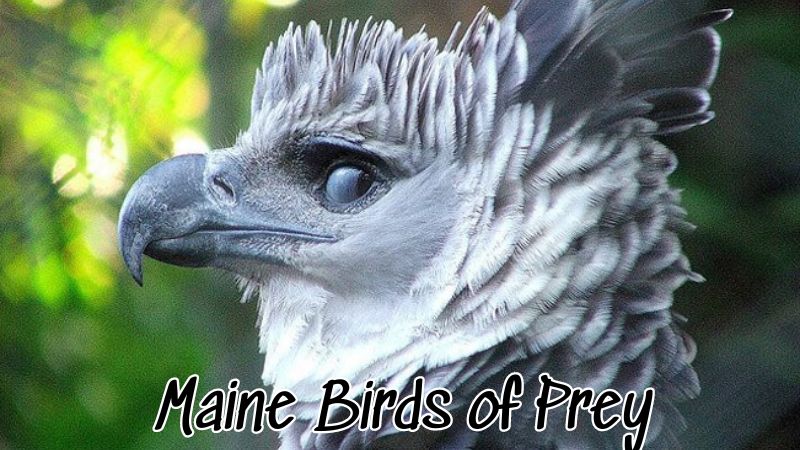
Habitat and Food Sources of Maine Birds of Prey
Habitat
- Forests: Many predatory birds in Maine, such as the Great Horned Owl, thrive in dense forests. These wooded areas provide ample cover and nesting sites while supporting a variety of prey. The tall trees and thick underbrush offer excellent opportunities for hunting and camouflage.
- Grasslands: Open grasslands are preferred by birds like the Red-tailed Hawk. These areas offer wide views for spotting prey and plenty of space to soar. The open terrain supports various small mammals and birds, which are ideal prey for these hawks.
- Wetlands: Swamps, marshes, and bogs are crucial habitats for some predatory birds. For instance, the Bald Eagle is often found near these areas due to the abundance of fish. Wetlands provide vital hunting grounds and nesting sites, as well as a diverse range of prey.
- Coastal Areas: Coastal regions in Maine support a variety of predatory birds, including Bald Eagles, which hunt along the shores. These areas offer access to fish and other marine life, making them ideal for birds that feed on aquatic prey.
Adaptations to Different Environments
- Forest Adaptations: Predatory birds in forests, like the Great Horned Owl, have adapted to use the dense foliage for hunting cover and nesting. Their ability to silently navigate through the trees and locate prey in low light conditions is crucial for survival.
- Grassland Adaptations: In open grasslands, birds such as the Red-tailed Hawk use their excellent eyesight to spot prey from high in the sky. Their large wings and soaring flight are adapted to cover extensive areas of open ground in search of food.
- Wetland Adaptations: Wetland-dwelling predators, like the Bald Eagle, have adapted to hunt both in water and on land. Their powerful talons and keen vision allow them to catch fish and other aquatic prey effectively.
- Coastal Adaptations: Coastal predatory birds are adapted to hunt in a marine environment. They have specialized hunting techniques for capturing fish and are often seen diving into the water from the air.
Food Sources
- Small Mammals: Predatory birds such as the Red-tailed Hawk and Great Horned Owl frequently hunt small mammals like mice, squirrels, and rabbits. These animals provide a significant portion of their diet and are crucial for their energy needs.
- Small Birds: Many raptors, including the Great Horned Owl, also prey on smaller bird species. This dietary habit can be observed in their hunting strategies and preferences.
- Fish: The Bald Eagle is known for its diet consisting primarily of fish. It uses its powerful talons to catch fish while diving from the air. Wetland and coastal areas are particularly important for these birds.
- Insects: Some predatory birds may also consume insects, although this is less common. This can be seen in species that adapt to a more varied diet when other prey is less available.
Hunting Techniques
- Perch Hunting: Birds like the Red-tailed Hawk often perch on elevated spots such as trees or poles to spot prey. They use their keen vision to identify potential targets from a distance before swooping down to capture them.
- Soaring: Many raptors, including the Red-tailed Hawk, use soaring flight to cover large areas of open terrain. This allows them to use their excellent eyesight to scan for prey while conserving energy.
- Ambush: The Great Horned Owl employs an ambush strategy, utilizing its silent flight to get close to prey before striking. This technique is particularly effective in the dim light of dawn and dusk.
- Dive Hunting: The Bald Eagle is known for its dramatic diving technique to capture fish. It soars high above the water before diving sharply to snatch fish with its powerful talons.
Overall, the predatory birds of Maine are highly adapted to their diverse habitats and hunting techniques, each utilizing unique strategies to thrive in their specific environments.
Role of Predatory Birds in Maine’s Ecosystem
Regulating Prey Populations
- Controlling Rodent Populations: Predatory birds play a crucial role in controlling the population of small mammals, such as rodents. By preying on animals like mice and squirrels, they prevent these species from reaching excessive numbers, which could otherwise lead to ecological imbalances. This predation helps to maintain the health of various habitats by limiting the overpopulation of rodents that could damage vegetation and disrupt other species.
- Maintaining Ecological Balance: Predatory birds contribute to the overall balance of the ecosystem. Their hunting activities ensure that no single species becomes overly dominant, which supports biodiversity. By regulating prey populations, these birds help sustain a balanced environment where different species can coexist harmoniously.
Indicators of Environmental Health
- Reflecting Environmental Pollution: The health and abundance of predatory birds can serve as indicators of environmental quality. A decline in these bird populations may signal issues such as habitat degradation, pollution, or changes in prey availability. For example, if predatory birds are decreasing, it might indicate higher levels of environmental contaminants that affect their health and reproductive success.
- Monitoring Ecosystem Changes: Since predatory birds are often at the top of the food chain, changes in their populations can reflect broader environmental shifts. For instance, a decrease in their numbers might reveal underlying issues such as habitat loss or ecosystem imbalances, prompting further investigation and conservation efforts.
Conclusion
In conclusion, Maine birds of prey are essential to maintaining the ecological balance of the region. Their roles in regulating prey populations and serving as indicators of environmental health highlight their importance in the ecosystem.
Understanding and protecting these magnificent birds ensures the continued vitality and balance of Maine’s natural world. Maine’s birds of prey truly exemplify the interconnectedness of life in our environment.

